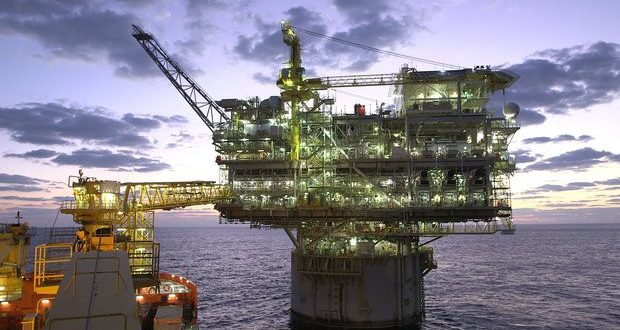The uplift in America’s LNG exports has tightened restrictions against Qatar as the world’s largest exporter of the product thus giving Iran the upper hand in gas recovery from South Pars joint field.
Nowadays. the US has taken up the leading role in the world’s oil and gas markets as evidenced by the fact that even a consensus between OPEC and non-OPEC countries has exerted the minimum effect on development of the industry in the US.
Consequently. when limitations ahead of crude oil exports in the US were eliminated in Barak Obama’s government. the few-dollar rise in oil prices which climbed to 50-55 dollars per barrel has offered a new opportunity to the American oil and gas industry for lifting its output capacities.
At the present time. America’s oil production has soared to nine million barrels per day (bpd) 40 per cent of which is recovered and released from unconventional resources. Estimations reveal that. in view of Donald Trump’s pro-independence policies in the energy sector will bring about an increase in America’s production capacity for at least four years of his presidency with unconventional resources high on agenda.
The rise in US crude output will directly stimulate demand in the global market in a way that the slightest fluctuation in volume of America’s oil reserves will affect crude price.
US-Qatar gas rivalry
In addition to crude oil. Americans have now turned into a full-fledged contender in the field of natural gas production and exports among major countries exporting gas and LNG.
Whence. American projects for production and exports of LNG are being implemented and becoming operational in a succession and companies like Britain’s Royal-Dutch Shell and Korea Gas Corporation (KOGAS) have inked 25-year contracts with US firms for LNG purchases.
Cheniere`s Sabine Pass liquefaction terminal in Louisiana. the first of its kind to ship US shale gas overseas. managed to export 11 cargos only in December 2016 to countries like China. Japan and South Korea as Asia`s largest gas markets.
In the meantime. Americans take advantage of the rise in gas prices in Henry Hub and Asian markets by transferring the cheaper gas of the former market to the more expensive market of North East Asian and selling it.
Estimates show that by the end of 2017. America’s LNG export capacity will increase to about 14 million tons. a capacity building which. both directly and indirectly. will threaten gas markets of Qatar as the world’s largest exporter of LNG.
Meanwhile. countries like Malaysia. Australia and some African countries including Guinea and Mozambique need to be considered as suppliers of LNG who are also likely to foster the competition in the market.
Russia enjoying the upper hand in European gas market
Despite the fact that position of Qatar as the world’s largest LNG seller has been put at risk and the littoral state south of the Persian Gulf has become extremely generous by offering discounts and significant advantages to consumers and customers in India. China. Japan and South Korea. still. Russians enjoy the leading role in the European gas market.
In order to conduct gas exports to Europe. the US needs to pay costs of gas liquefaction and sea transport which equal several cents per cubic meter. Thus. Russian are in a better position in the gas market since they can deploy the product across Europe by merely using a few-hundred-kilometer pipeline.
What’s more. existence of multiple routes for gas exports to North. East and Southeast Europe by Russians. has given them the bargaining power over countries like Ukraine. which is a barrier to the transmission of Russian gas. Presently. Russians enjoy the upper hand as regards gas exports to Europe.
Reports by international credible institutions show that the volume of Russian gas exports to Europe rose by 12.5 percent in 2016 and the country has reached the record high figure of transferring 180 billion cubic meters of gas to Europe.
Yet another noteworthy point is that the share of Russian gas in Europe’s gas supply basket increase by three percent to reach 34 per cent by the end of 2016.
In addition. Europe`s gas imports soared last year as the figure for 2016 indicated a 6% upsurge as compared to 2015 and hit 450 billion cubic meters.
Meanwhile. a report by BP (British Petroleum) also shows that the market remains as a secure market with a high demand for exporters as well as that trading volume of gas through pipelines will have become sevenfold by 2035.
Plummeting gas prices in regional markets
Gas prices in transactions leading up to January 23. 2017 followed a downward trend in all markets excluding one and it seems that even strengthening and stabilization of oil prices in the range of 55 dollars a barrel has so far failed to bring price stability to the gas market.
OPEC Affairs Department of the Iranian Ministry of Petroleum. in a report. announced that up to 23 January in North-East Asia market. price of spot LNG gas plummeted by 45 cents decreasing to 7.85 dollars per million British thermal unit (BTU).
In the South-West Europe market also spot LNG prices fell 25 cents to stand at 8.25 dollars per million BTU.
Also in America’s Henry Hub market. spot natural gas prices have dropped to the range of three dollars and 14 cents to 20 cents per million BTU.
However. in the Britain’s NBP market. spot price of natural gas has risen by 87 cents and been traded in the range of seven dollars and 20 cents per million BTU due to increased seasonal demand.
Grounds ready for Iran to lift gas output
Although increased production and export of LNG in America marks bad news for the world’s producers and exporters of gas. the rise in US LNG exports remains as more of a golden opportunity than a threat.
More LNG supply in the market by various countries especially America. will create more restrictions for Qatar as regards production and exports of gas in the form of LNG and given that demand has surpassed supply in LNG market. Qatar will be inevitably forced to curb its gas output from South Pars field.
Presently. nearly 90% of Qatari gas recovered from South Pars is supplied to LNG units as feedstock and with the rise in number of LNG suppliers in the market. Qatar will be forced to impose restrictions on gas production for marketing and sale purposes. a measure which will offer Iran the opportunity to recover and produce more gas from South Pars joint field.
In the current situation. although Iran. apart from shipments to Turkey. holds no serious project to export gas or LNG. the recovered gas from South Pars holds extensive capabilities for use in industries. power stations. CNG stations. storage in underground tanks. injection into oil reservoirs as well as petrochemicals production.
On the other hand. the rise in share of natural gas in Iran’s fuel and energy basket. will pave the path for exporting surplus of petroleum products. especially diesel. fuel oil and liquefied gas to regional and global markets.
In other words. although Iran is not a large gas exporter. it can take advantage of the halt in Qatar’s gas recovery from South Pars in a bid to ship up to 600 thousand barrels per day of petroleum products in 2017.
Iran’s gas production capacity at South Pars currently stands at about 500 million cubic meters per day though the figure is expected to hit 700 million cubic meters once remaining phases of the joint gas field come on stream.

 Iran Energy News Oil, Gas, Petrochemical and Energy Field Specialized Channel
Iran Energy News Oil, Gas, Petrochemical and Energy Field Specialized Channel



